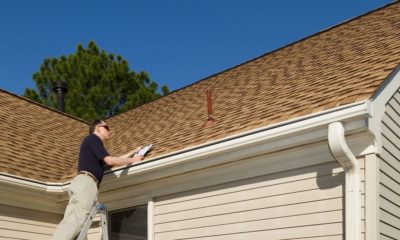Lori Ballen, the owner of this website, benefits from purchases made through her affiliate links.
A safe room, also known as a panic room or refuge room, is an area in your house that is usually very small. Saferooms work by providing temporary safety for you and/or your family during dangerous situations like fires, home invasions, hurricanes, tornadoes, chemical spills (like if there is a meth lab in the house next to you), and other life-threatening situations.
A safe room can be as simple as using your walk-in closet or as complex as converting a section of your basement into a bunker with food, water, weapons, and any other supplies that would help you survive long term (if there was an apocalypse, for instance).
You can also use a safe room to keep your pets safe, as well as yourself and any visitors. Don’t forget items like flashlights, lanterns, glow sticks (to see), battery or crank-operated radios (so you can stay updated about what’s going on in the area around you), batteries, food, and water, first aid kit, toilet paper, and a telephone.
How To Create a Saferoom
In a practical sense, a safe room is usually a small room with thick walls and maybe even bulletproof windows. It shouldn’t allow light from the outside to come in so that nobody can find it. The door should be sturdy enough to withstand assault for at least an hour or two, but also lockable from the inside if necessary.
You should also be able to remain in the room for several days without running out of air, food, or water.
If your safe room has a window, it should be made of one-way glass so that you can see out but nobody could see in. One good type is security mirrors, which look like normal mirrors when they’re turned face-in towards the wall but become one-way mirrors when they’re turned away from the wall. You may also want to put a security camera outside your safe room so that you know if anyone is coming before they enter it.
If your safe room is in the basement, another good option is a secret door. It wouldn’t be too difficult to build your own or buy a kit at a hardware store.
The floor should be even so that if you have to stand or crouch in the room for a long period of time it’s not as likely to cause too much pain or cramping. In addition, there should be no “funny” angles where your body is liable to get stuck as you move around in the room.
If you want to make your safe room look like a normal room, there are at least two good options: wallpaper over the door and paint over the entrance area. If you’re going to use wallpaper, it should be convex so that nobody could tell that there was a door around here if they just glanced in this direction. If you paint over the entrance area, use a darker color than usual so that it wouldn’t be as noticeable.
Obviously, tell nobody about your safe room unless it’s absolutely necessary. Your family may try to convince you to let them in when there’s an emergency but this is something that should remain between you and your family members who are aware of the room.
Do you need a permit?
Many cities require permits to convert your basement into a safe room. The reason for this is because it takes time and resources to do so as well as money. It would be rather difficult to convince the city or county that an unregistered safe room was put in your house with the sole intention of keeping you safe during dangerous situations.
What are the 3 Attributes of a Safe Room?
- Can’t be seen from the outside
- Can withstand at least 15 minutes of a 3 alarm fire or an EF3 tornado
- Locked door(s) with at least 1 deadbolt lock and 2 other locking mechanisms (like a keypad for code entry, combination, etc.)
What items should I have in my Saferoom?
- Sleeping bag(s) for each person
- Portable stove or small grill, charcoal/propane fuel, cooking utensils for preparing meals
- Phone line with telephone answering machine (that has a backup power source), landline phones
- Battery-operated radio(s)
- Flashlight(s) with extra batteries and/or candles/lantern(s)
- Water, food, toilet paper, first aid kit(s), soap/sanitizer for washing hands
- Weapons (handgun(s), shotgun(s), rifle(s))
- Extra cash or emergency credit cards in case your ATM card doesn’t work or you are cut off from the rest of the world somehow
- Change of clothes for each person
- Copy of important documents (like birth certificates, financial documents) in case you are cut off from the rest of your world somehow
- Change of shoes for each person
- Copy of house key for the shelter’s lock(s)
- A water purifier that doesn’t require electricity to work (like tablets)
- MREs or MRE heater (they’re self-heating)
How do you turn your safe room into a tornado shelter?
You can buy ready-made safe rooms/shelters, install doors and windows that are converted to withstand 300+ mph winds, or rely on the roof of your home. If your roof can be counted on to withstand high winds but you don’t have a shelter underneath it, you need to make sure that the entrance/exit of the shelter is as close to your house as possible.
You also need to make sure that there will be no debris flying towards the entrance/exit either which means you should probably bring people in from the outside to install it.
Best Practices
-Make sure your safe room has a door that can’t be detected from the outside and make sure it’s not a different color than all of the other walls.
-Don’t tell people about it unless they’re family members who will know where to find you when something horrible happens. If you’re going to use an out-of-state contact, make it your lawyer.
-Do not use the safe room during a test run unless you’re trying to find out whether or not something is wrong with it. It’s best to keep people on the outside of the door even during test runs because it could alert an intruder that you were testing security systems and they might come back when you least expect it.
-Make sure that your house will be able to withstand the force of a 3 alarm fire for at least 15 minutes.
-Test your landline phones so you know they work when it’s an emergency. Make sure there are backup power sources in case the electricity goes out or that there is a regular phone line that doesn’t require electricity.
-Use extra locks on your doors so that it will be harder for criminals to break in.
-Know exactly where the shelter is located inside your house at all times. If you’re attacked, go there immediately without stopping to pick up anything along the way.
What are some common mistakes people make when creating a safe room?
-Leaving windows uncovered because they think the glass will protect them from debris.
-Hiding the safe room entrance/exit behind a bookcase, cabinet, or some other piece of furniture. Criminals know where to look for stuff like that and they know how to open it if they see one in your house instead of having them install it themselves.
-Keeping food or drinks in the safe room. The shelter should be kept completely dry so if it starts raining after you go there, you’ll have to wait until it stops before you can leave again. Keeping food or drinks in there will also attract insects and rodents which can cause diseases/illnesses when they come into contact with your skin.
-Keeping important documents in your safe room. This seems like a good idea but what if the document gets wet or damaged? You’ll be out of luck if that happens. It’s best to only keep copies.
-Building the shelter close to the entrance/exit because you think it will make it easier for everyone to get in and out quickly. The closer you are to your front/back door, the more likely you are to be attacked if that’s where the criminal(s) enters/exit your house.
-Building a sleeping area in the safe room because it makes sense when you’re asleep during the day but it means that there won’t be any windows for light and you’ll have no idea what time it is.
Closing,
Remember that the safest place to be is inside your house, not outside. If you can’t survive in your home for at least 15 minutes without any major damage occurring, you should either build it stronger or start considering somewhere else to live.





